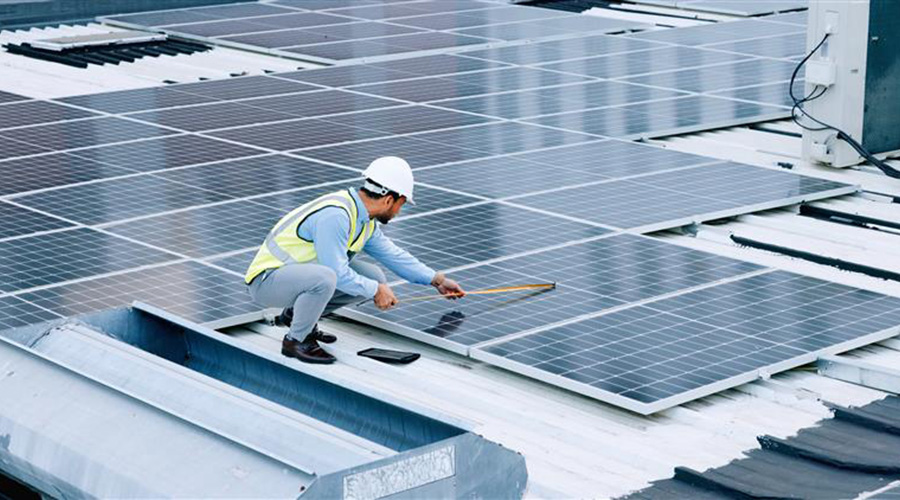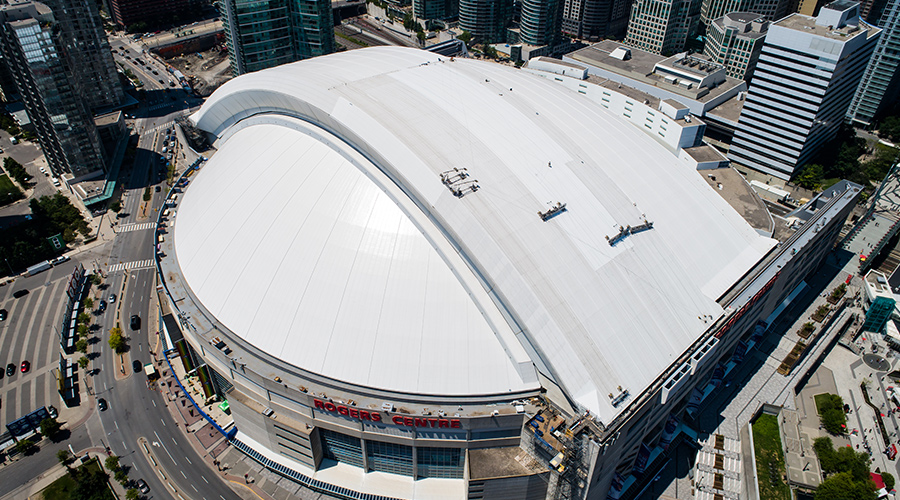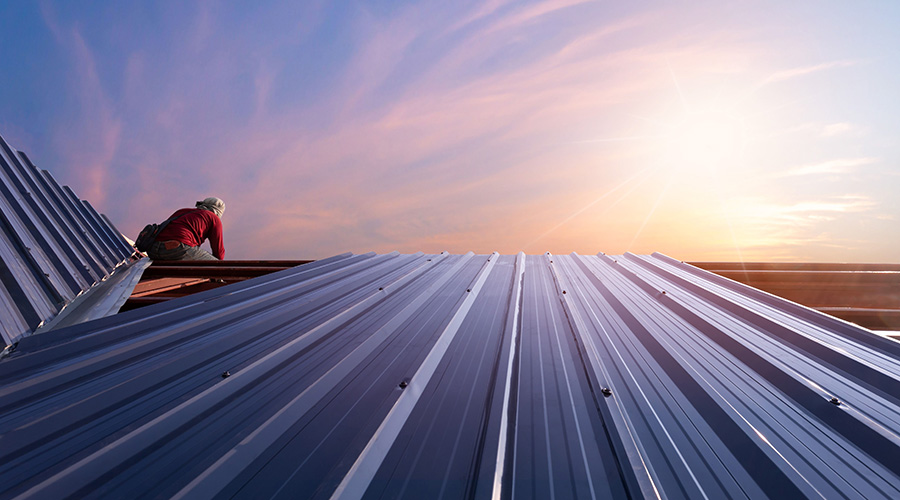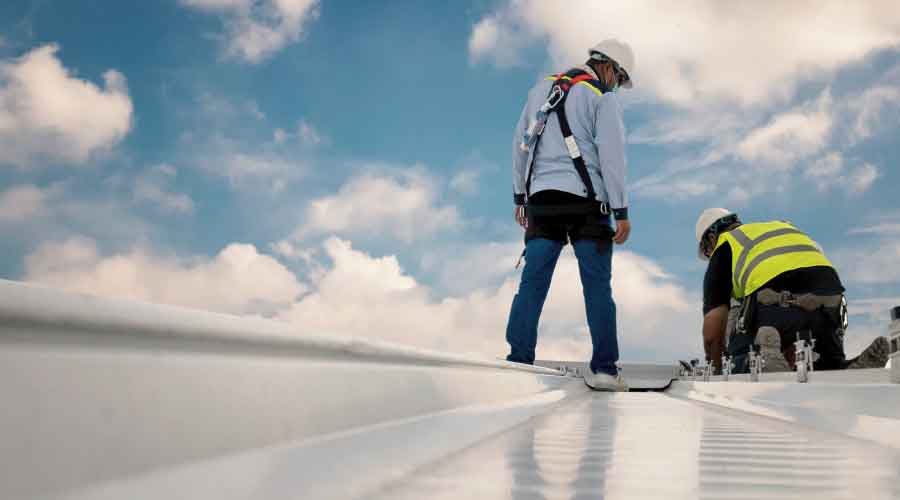Survey All Roofs
There are several pieces to a well-documented roof survey. The process begins by making scale drawings of the roof. In a fully dimensioned survey drawing, roofs are segmented into sections. A roof section is a discrete area bounded by a roof edge, wall, expansion joint, and change in elevation to a higher wall. Roofs are segmented into sections because different areas of roofs may have different materials or construction, or have been built at different times.
The survey documentation should also include a precise system of coordinates and labels for rooftop equipment, drains, and other discontinuities. Field notes maintained electronically should include information such as size and number of roof drains and scuppers, height of parapet walls and adjacent wall elevations, height of mechanical equipment curbs, conduits, and gas lines. The notes should also include information about window and wall construction, the types and number of layers of roofing systems, locations of standing water, and visually evident distresses.
Levels and other instruments should be used to measure and calculate actual roof slopes and drainage patterns. Photographs should show building elevations, panoramic roof views, and specific details and distresses.
Also important to the survey are core cuts of each section, as well as an infrared moisture survey. Core cuts of sufficient quantity and at locations representative of the roof section can reveal the type of roof membrane — asphalt or coal tar pitch built-up (BUR), or EPDM, for example. Cores will also reveal the type and thickness of the roof insulation and whether it is wet.
If the core cut is inconclusive, however, an infrared moisture survey should be conducted. An infrared camera can determine the exact location of wet insulation.
The most important information a surveyor must determine is how the water gets off the roof and where it goes after that. Does the water drain or evaporate from the roof within the industry recommended time of 48 hours? Does the roof have standing water locations? No single feature enhances roof performance more than good drainage.
Related Topics:

















